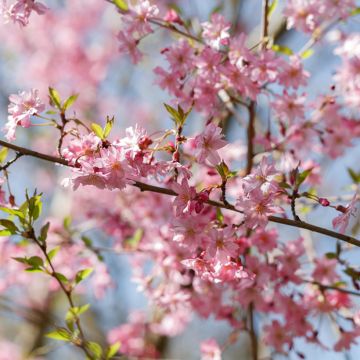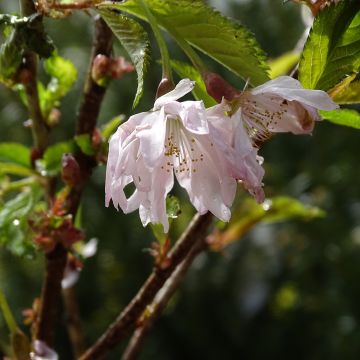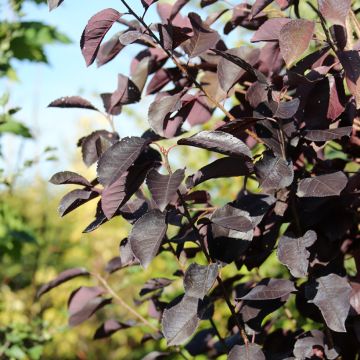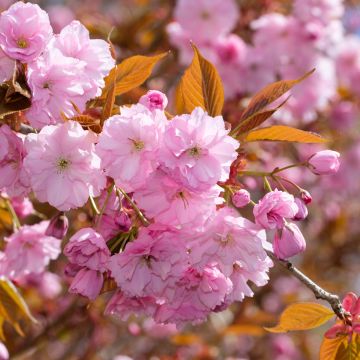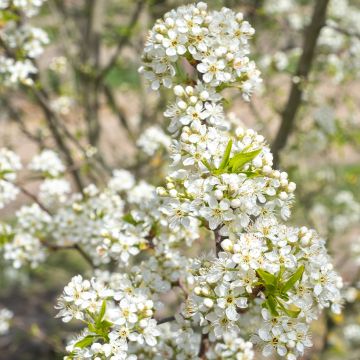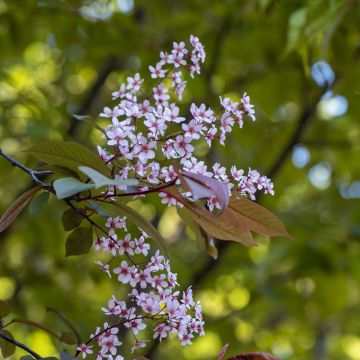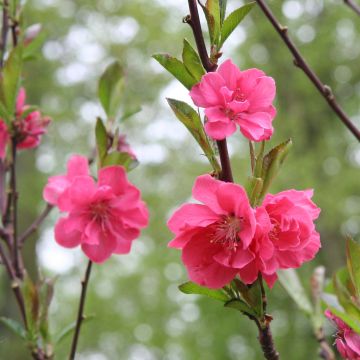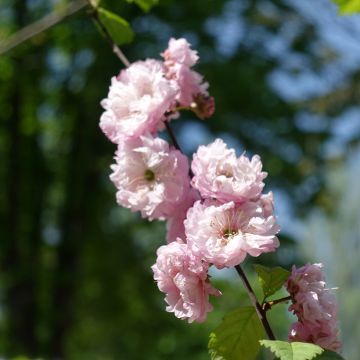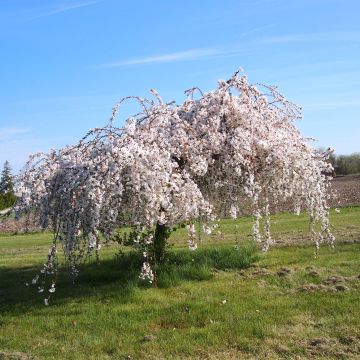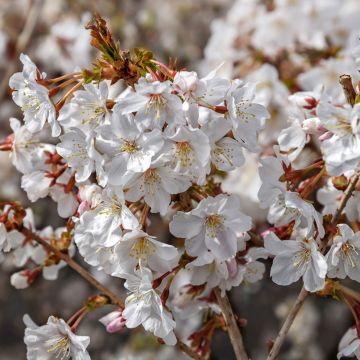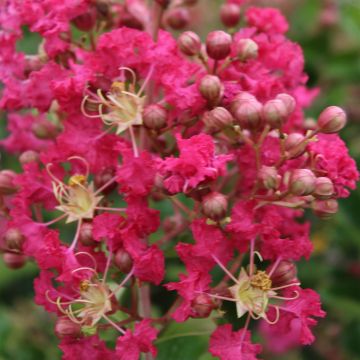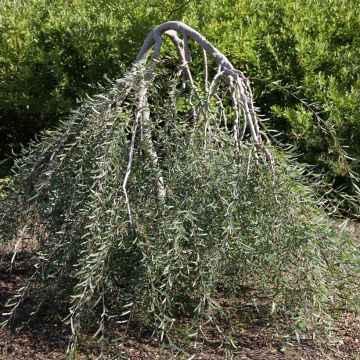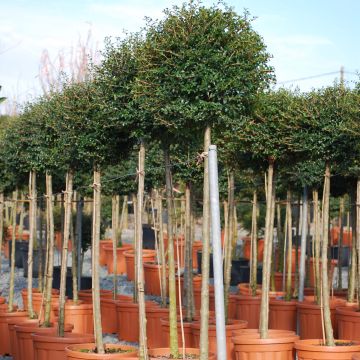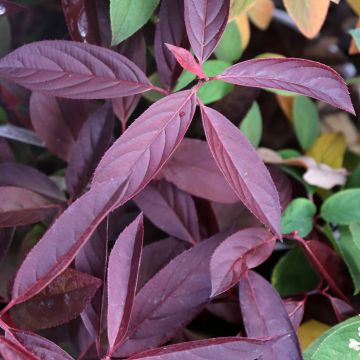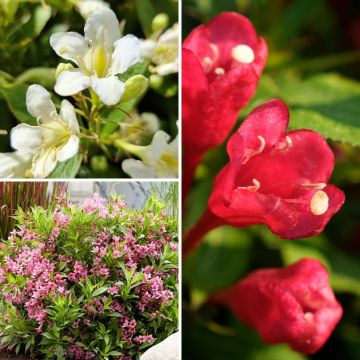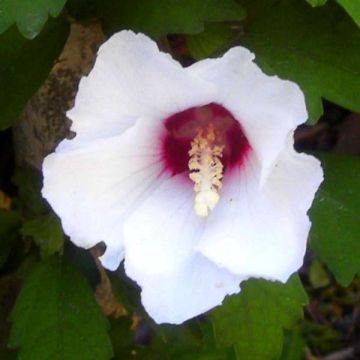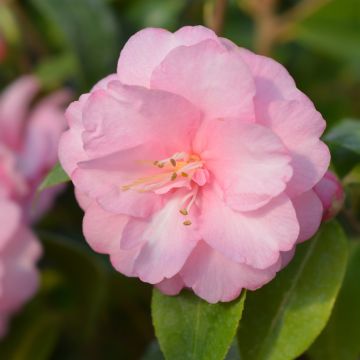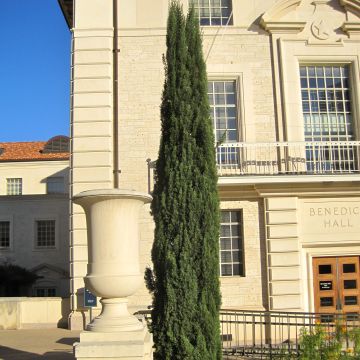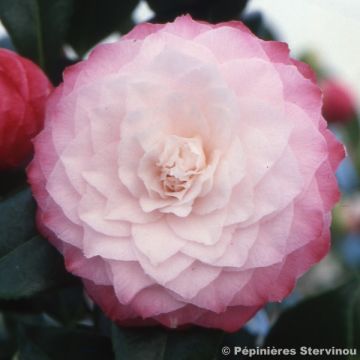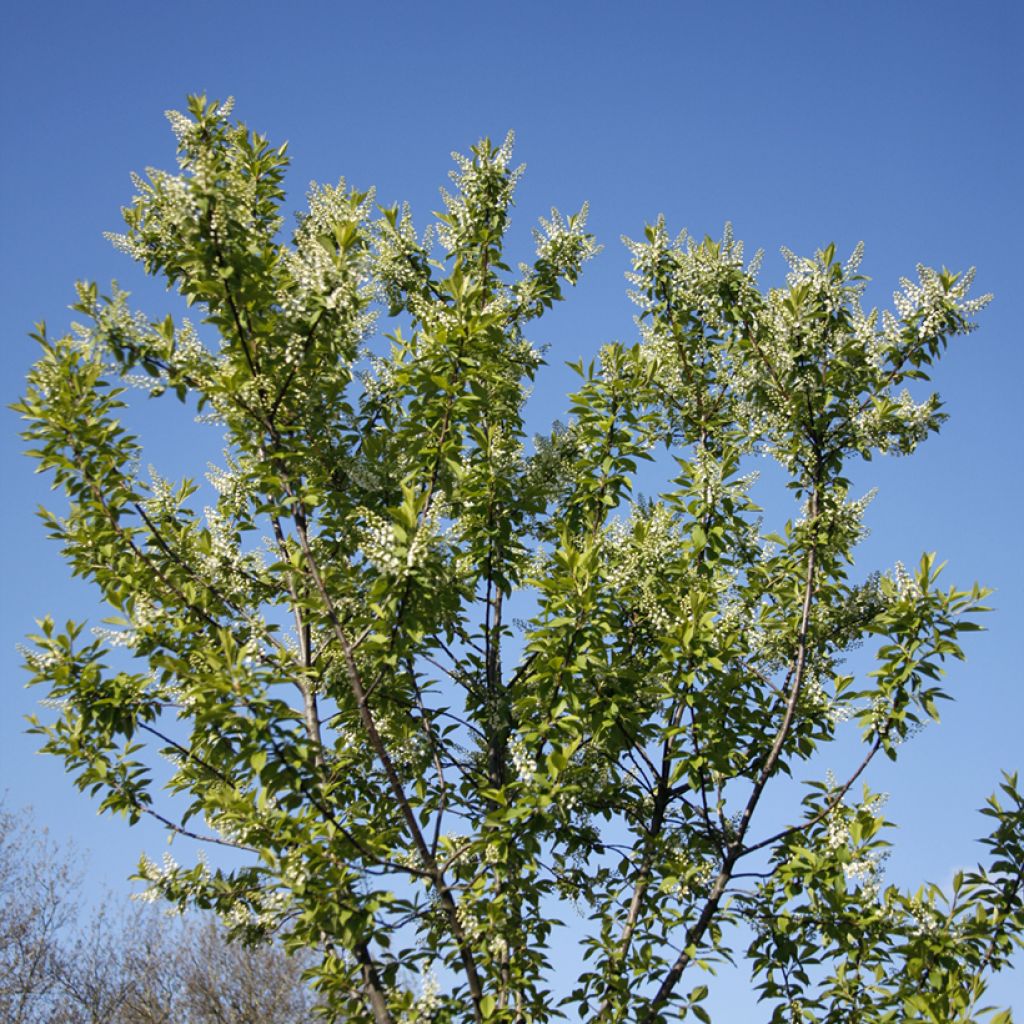

Prunus padus Nana - Bird cherry
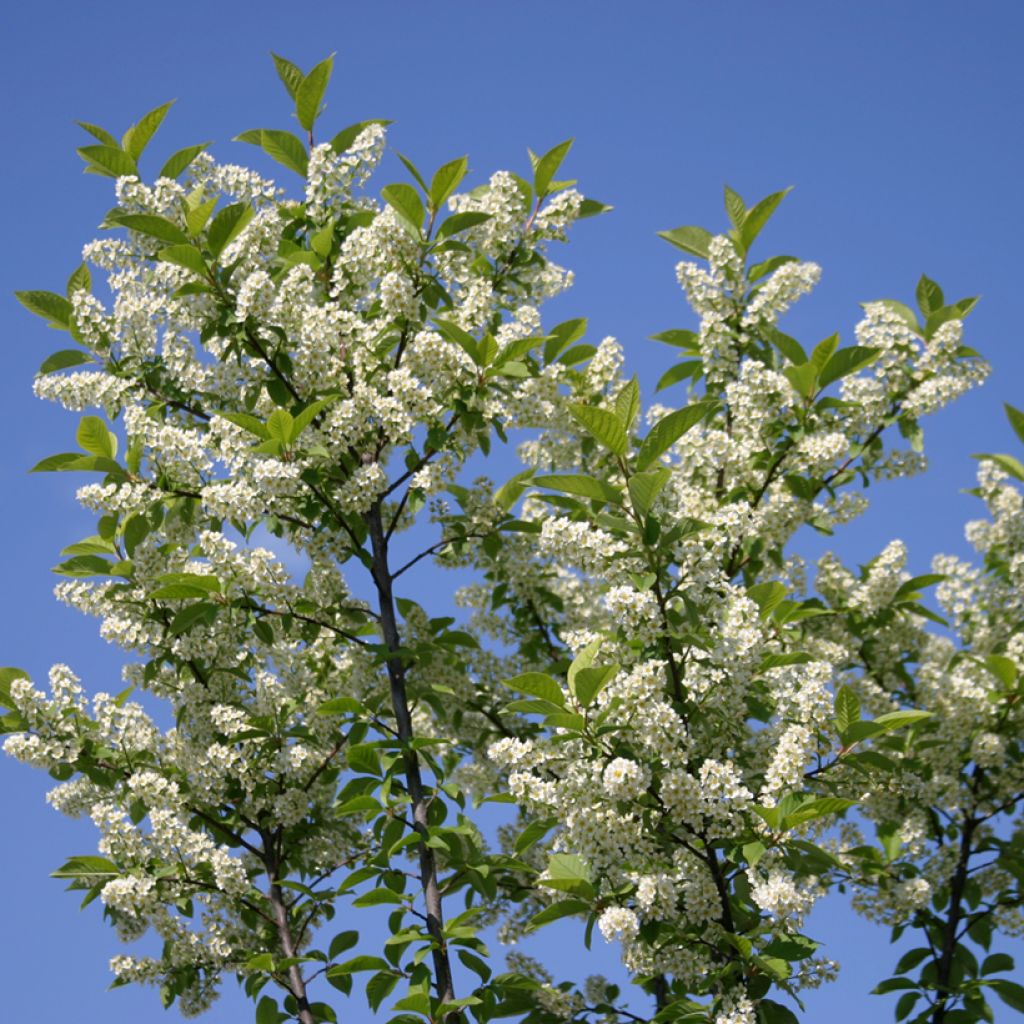

Prunus padus Nana - Bird cherry
Prunus padus Nana - Bird cherry
Prunus padus Nana
Bird cherry, European bird cherry
This plant carries a 24 months recovery warranty
More information
We guarantee the quality of our plants for a full growing cycle, and will replace at our expense any plant that fails to recover under normal climatic and planting conditions.
Oversize package: home delivery by special carrier from €6.90 per order..
Express home delivery from €8.90.
Does this plant fit my garden?
Set up your Plantfit profile →
Description
Prunus padus 'Nana' is a compact form of the Bird Cherry, recognisable by its "ball" shape. This tree has a moderate growth and carries a beautiful globose crown at the top of a very straight stem. In spring, it is adorned with highly fragrant, honey-producing clusters of white flowers, followed by a few small black cherries sought after by birds. The Bird Cherry is perfect for clay and limestone soils. Suitable for small to medium-sized gardens, it can be planted as a standalone specimen or in rows.
Prunus padus 'Nana' is a dwarf variety grafted onto a stem. The species is a small tree from the large Rosaceae family, known by various names such as amaruvier, stinking wood, depending on the region. It is native to Europe, northern Asia, and can be found as far as Japan. Its natural habitat corresponds to rather humid environments, where it grows spontaneously on clayey, often limestone, soils that are seasonally waterlogged. This shrub, which suckers when not grafted, spontaneously forms thickets, but it does not appreciate competition from other shrubs. The 'Nana' cultivar has a globose habit with smaller flowers and leaves as well as slower growth. At maturity, the tree will reach between 3 and 4 m in height and 2 to 3 m in width, depending on the growing conditions.
In the Bird Cherry 'Nana', the bark of the trunk and older branches is dark brown and peels off in strips, while the twigs are reddish-brown. The branches emit a scent of bitter almond when broken, which earned it the name "stinking wood". The young spring leaves are pale green and appear during flowering. The mature leaves are darker green, with many tufts of down on the underside. They are ovate to obovate, finely toothed along the edges. This deciduous foliage turns yellow to orange-yellow in autumn before falling. Flowering occurs in April-May (sometimes in June) depending on the region, on twigs with young leaves. The 1 cm in diameter flowers with 5 white petals have a delightful almond fragrance and are arranged in clusters measuring up to 12 cm long. Pollinated by insects, these nectar-rich flowers give way to small black "cherries" the size of a pea, ripening in August. Bitter to sour in taste and astringent, these berries are not very fleshy and have large stones, and they are scarce or even absent on this variety. Some birds are fond of them.
Prunus padus 'Nana' is a very hardy small tree that will thrive in many regions, as long as it has deep soil for its roots to dive into. It can be planted as a standalone specimen on a lawn or in the centre of a bed of perennials and low-growing shrubs. Plant some ground cover roses or Nandina domestica 'Fire Power' at its base to accompany it. In a more spacious garden, whether it's a classic or contemporary style, several plants can be planted along a wide path or two specimens can be used on either side of a gate.
Report an error about the product description
Prunus padus Nana - Bird cherry in pictures


Plant habit
Flowering
Foliage
Botanical data
Prunus
padus
Nana
Rosaceae
Bird cherry, European bird cherry
Cultivar or hybrid
Other Prunus
Planting and care
Prunus padus 'Nana' should be planted in spring or autumn, depending on the climate. It thrives in full sun or partial shade, in any soil, with a preference for moderately dry clay-limestone soils. It does not like excessively hot and arid exposures, competition from the roots of other bushes, or the shade of large trees. This tree tolerates heavy and sticky soils, even occasionally waterlogged. Once well established in deep soil, it is however capable of withstanding summer drought fairly well. Water regularly during the first two years to help it establish. Dig a large planting hole. The young leaves may be damaged by late frosts: avoid locations exposed to cold and dry winds. This Prunus has few natural enemies.
Planting period
Intended location
Care
This item has not been reviewed yet - be the first to leave a review about it.
Hedge shrubs
Haven't found what you were looking for?
Hardiness is the lowest winter temperature a plant can endure without suffering serious damage or even dying. However, hardiness is affected by location (a sheltered area, such as a patio), protection (winter cover) and soil type (hardiness is improved by well-drained soil).

Photo Sharing Terms & Conditions
In order to encourage gardeners to interact and share their experiences, Promesse de fleurs offers various media enabling content to be uploaded onto its Site - in particular via the ‘Photo sharing’ module.
The User agrees to refrain from:
- Posting any content that is illegal, prejudicial, insulting, racist, inciteful to hatred, revisionist, contrary to public decency, that infringes on privacy or on the privacy rights of third parties, in particular the publicity rights of persons and goods, intellectual property rights, or the right to privacy.
- Submitting content on behalf of a third party;
- Impersonate the identity of a third party and/or publish any personal information about a third party;
In general, the User undertakes to refrain from any unethical behaviour.
All Content (in particular text, comments, files, images, photos, videos, creative works, etc.), which may be subject to property or intellectual property rights, image or other private rights, shall remain the property of the User, subject to the limited rights granted by the terms of the licence granted by Promesse de fleurs as stated below. Users are at liberty to publish or not to publish such Content on the Site, notably via the ‘Photo Sharing’ facility, and accept that this Content shall be made public and freely accessible, notably on the Internet.
Users further acknowledge, undertake to have ,and guarantee that they hold all necessary rights and permissions to publish such material on the Site, in particular with regard to the legislation in force pertaining to any privacy, property, intellectual property, image, or contractual rights, or rights of any other nature. By publishing such Content on the Site, Users acknowledge accepting full liability as publishers of the Content within the meaning of the law, and grant Promesse de fleurs, free of charge, an inclusive, worldwide licence for the said Content for the entire duration of its publication, including all reproduction, representation, up/downloading, displaying, performing, transmission, and storage rights.
Users also grant permission for their name to be linked to the Content and accept that this link may not always be made available.
By engaging in posting material, Users consent to their Content becoming automatically accessible on the Internet, in particular on other sites and/or blogs and/or web pages of the Promesse de fleurs site, including in particular social pages and the Promesse de fleurs catalogue.
Users may secure the removal of entrusted content free of charge by issuing a simple request via our contact form.
The flowering period indicated on our website applies to countries and regions located in USDA zone 8 (France, the United Kingdom, Ireland, the Netherlands, etc.)
It will vary according to where you live:
- In zones 9 to 10 (Italy, Spain, Greece, etc.), flowering will occur about 2 to 4 weeks earlier.
- In zones 6 to 7 (Germany, Poland, Slovenia, and lower mountainous regions), flowering will be delayed by 2 to 3 weeks.
- In zone 5 (Central Europe, Scandinavia), blooming will be delayed by 3 to 5 weeks.
In temperate climates, pruning of spring-flowering shrubs (forsythia, spireas, etc.) should be done just after flowering.
Pruning of summer-flowering shrubs (Indian Lilac, Perovskia, etc.) can be done in winter or spring.
In cold regions as well as with frost-sensitive plants, avoid pruning too early when severe frosts may still occur.
The planting period indicated on our website applies to countries and regions located in USDA zone 8 (France, United Kingdom, Ireland, Netherlands).
It will vary according to where you live:
- In Mediterranean zones (Marseille, Madrid, Milan, etc.), autumn and winter are the best planting periods.
- In continental zones (Strasbourg, Munich, Vienna, etc.), delay planting by 2 to 3 weeks in spring and bring it forward by 2 to 4 weeks in autumn.
- In mountainous regions (the Alps, Pyrenees, Carpathians, etc.), it is best to plant in late spring (May-June) or late summer (August-September).
The harvesting period indicated on our website applies to countries and regions in USDA zone 8 (France, England, Ireland, the Netherlands).
In colder areas (Scandinavia, Poland, Austria...) fruit and vegetable harvests are likely to be delayed by 3-4 weeks.
In warmer areas (Italy, Spain, Greece, etc.), harvesting will probably take place earlier, depending on weather conditions.
The sowing periods indicated on our website apply to countries and regions within USDA Zone 8 (France, UK, Ireland, Netherlands).
In colder areas (Scandinavia, Poland, Austria...), delay any outdoor sowing by 3-4 weeks, or sow under glass.
In warmer climes (Italy, Spain, Greece, etc.), bring outdoor sowing forward by a few weeks.

































